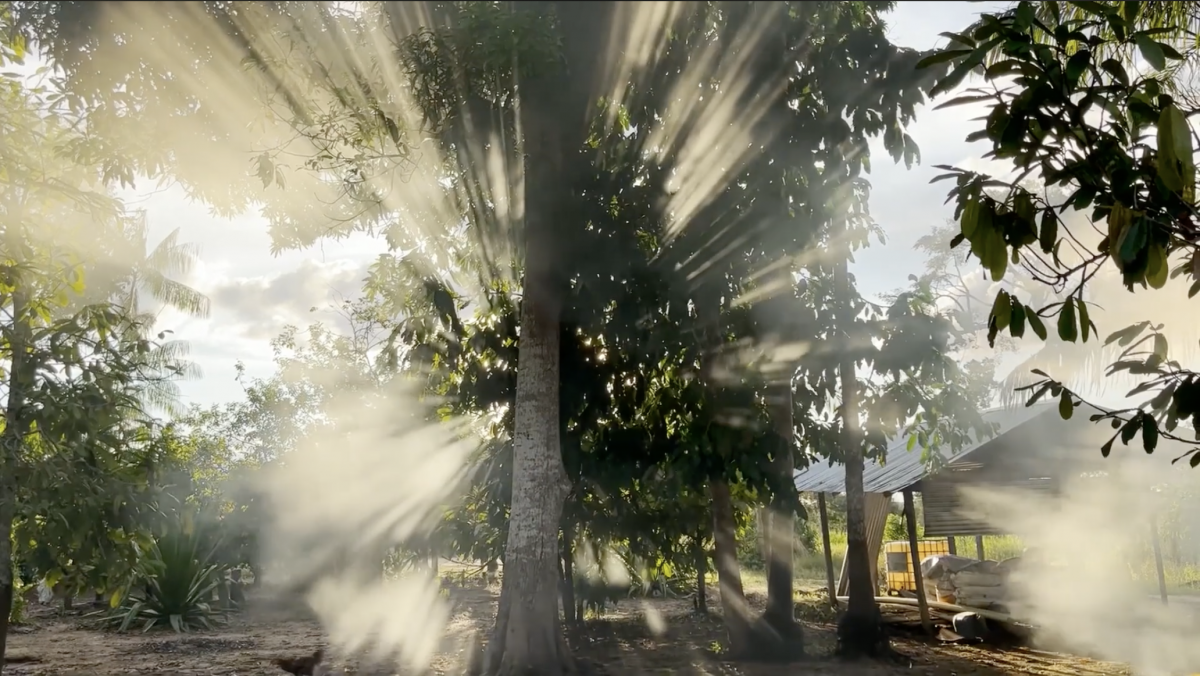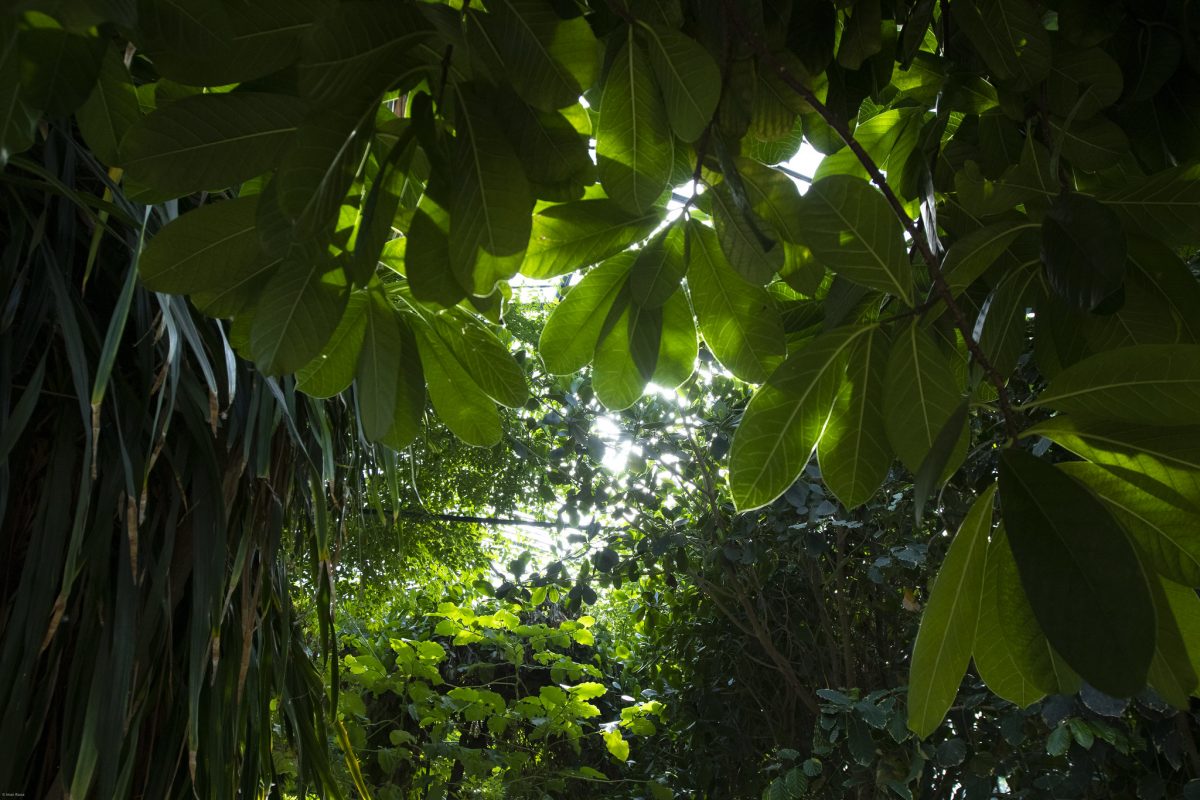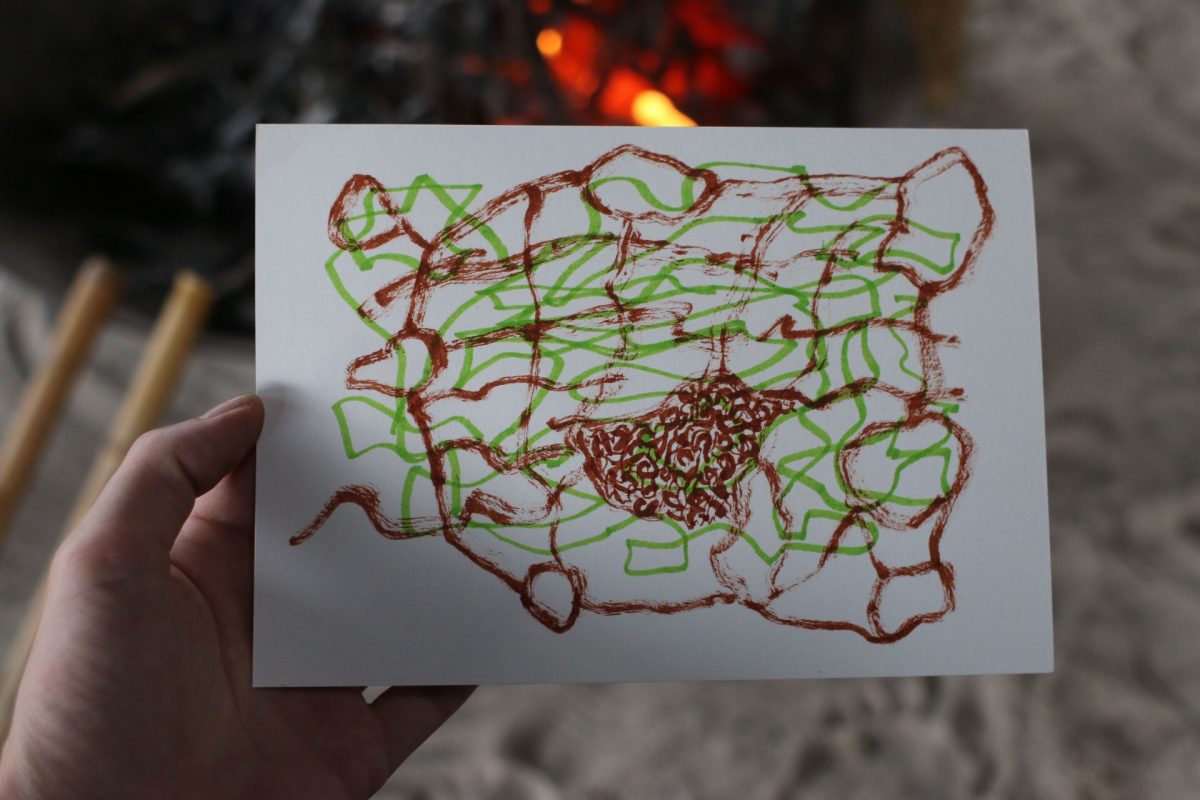Time: Weaving a Process of Intercultural Dialogue and Co-creation
This text is a reflection on my role as a manager and mediator in the Organizmo Bloom project. In it I narrate the process of ideation and planning of this experience and my accompaniment of its development. These are personal reflections, lessons and epiphanies collected along the way, that may be of use when it comes time to think of other forms of mediating intercultural dialogues and weaving horizontal processes of co-creation.
Time of Opportunity
Organizmo Bloom grew out of an invitation from European Alternatives to participate as partners in a call-for-entries sponsored by the British Council. Its design responded to the motivation and urgency of an opportunity to be taken advantage of and our link to this opportunity was created thanks to independent curator Marcela Caldas, who had been working with EA on the Room to Bloom program, a European platform that promotes spaces for dialogue, creation, and exchange between emerging artists whose practices address narratives related to migration, ecofeminism, and decoloniality. At Organizmo, we had just finished formulating our most recent manifesto “Cuerpo – Tejido – Territorio” (Body – Fabric – Territory), which spoke of the need to explore new narratives from the design of liminal and intercultural dialogues based on an ethic of a community approach arising from a respect for the origin –the horizontality– of the relationships between human and non-human environments and the observation of processes and life cycles.
Co-designing the proposal was an exercise in intercultural dialogue between two organizations situated, it could be said, at the antipodes: EA is a transnational European organization that operates out of various urban centers; Organizmo is a currently regenerating research and training center located in Colombia that operates from and for a rural context. Our languages, forms, and times are very different. It was, perhaps, however, thanks to the listening space that arises from differences that our meeting points, concerns, urgencies, and shared motives became evident. We soon understood that what united us was the call, the vocation to imagine ways to transform the world that is. To transform the world is to transform the way in which we relate in the present to imagine possible futures. Transform the way in which we relate to everything that is, with and within the time and space we inhabit, with all that is living and with the memory of everything alive. With this shared desire, we designed an intercultural dialogue program that would bring artists from the United Kingdom together with ethnic communities from Colombia.
We managed to win our race against time, meeting the deadline with a project that was based on the logic of European cultural management; a simple explanatory statement, a schedule of activities, and a budget. All this the product of the intuitions shared throughout a week of videoconferences between Palermo, Tenjo, Bogotá and Paris. And the need to go deeper.
But the clock was still ticking; Christmas and the Gregorian New Year arrived and with them the news that our proposal had been awarded one of the International Collaboration Grants. Emotion and vertigo.
Warp Time
All fabric has a right and a wrong side, a part meant to be seen and another meant to remain invisible, but that supports. Which is why, when we designed the plan for the project, we included times for what would not be seen, for what comes before and after the MOMENTUM.
Our first priority, therefore, was to give ourselves time to get to know each other as allies, to allow each to experience the presence of the other, and to position ourselves to create a common manifesto. The EA team traveled to Colombia, where we spent a week in a “Vision Quest” at Organizmo. An initial period of reflection, concentration, and listening. During this time, we shared words around the fire, seeking the joint formulation of the central concepts that we were interested in bringing to the field in this project. It’s important to highlight that the sharing of words around a fire is a collective communication practice, an ancestral and intercultural technology in our territory.
There, sharing words around the fire, we understood what we were looking for:
- To create a community of people from diverse horizons (creators, weavers, researchers, storytellers) who share common wounds, diverse knowledge, and perspectives that strongly question colonial and patriarchal tropes, interested in entering into a process of reflection, learning, and collective and horizontal creation.
- To promote new forms of coexistence and co-creation rooted in reciprocity, ethical care, and deep listening to human and more-than-human voices.
- To develop a horizontal dialogue from the unlearning of Western concepts and epistemologies, creating tactile memories and new ways of managing and transferring knowledge.
- To reflect on the mediation and protocols that guarantee an autonomous space of common agency for participants, in all phases of the process.
We also understood the need to extend the invitation to Colombian artists and to reconsider the idea of individual residencies in favor of a collective process that would be shared by a group of four (4) artists from Colombia and the United Kingdom and six (6) sabedoras (“knowers”) from the La Urbana community in the Jungles of Matavén.
La Urbana is a Piaroa ethnic community located in the northeastern part of the Vichada department. It belongs to the Unified Reservation of the Matavén Jungle, a protected area of 1,849,613 hectares inhabited by 12,000 indigenous people from seven different ethnic groups who enjoy collective property guarantees and are governed by an autonomous organization. Matavén is recognized as a unique ecosystem, a refuge for biodiversity, and one of the transition forests between the Amazon and the Orinoquia. The community is characterized by its tremendous organizational capacity, female leadership, and resilience. It has 140 inhabitants and is currently developing a process of cultural and nature tourism and a food production corridor.
Our proposal would focus on process rather than results, on sowing rather than extracting. The intercultural mediation of the process was designed based on Organizmo’s ethical principles of a community approach, and on the idea of the body as the first territory, as a starting point. The process consisted of four stages:
Stage 1: One week of preparation at Organizmo
Stage 2: Four weeks of immersion in the La Urbana community
Stage 3: One week at Organizmo for closing out and integrating the experience
Stage 4: Restitution process (online, face-to-face, and hybrid events to socialize the experience and its results)
The time then came to invite the artists whose processes resonated with the proposal.
María Buenaventura (Colombia), Siu Vásquez (Colombia), Dan Coopey (UK), Daniela Vals Genz (UK), and Juanita Delgado (Colombia) as accompanying artist, made up the group.
Time to Tune Up Listening Skills
This first moment arose from the need to create a care infrastructure for guest artists. To host them in an intimate space of containment to stimulate their senses and invite them to tune up their listening skills. A space and a time in which they could prepare for the trip, get to know each other, share and weave the bonds of trust that would accompany them during four weeks of immersion in a distant and isolated territory.
Organizmo’s facilities, located in rural Tenjo, Cundinamarca, include several cabins built using various earth-based techniques, a biodynamic organic garden, a community kitchen, a trades workshop, and the House of Thought, a large toroidal temple made of guadua.
Every morning that week a fire was lit in the Toroid, guided meditation was offered, and the palabra dulce (soft word) was shared to honor the silence, the presences, and the encounter with the other. Some of the artists and researchers from the Organizmo community helped to weave the group together through active listening to their bodies and to the multiple voices that inhabit the great collective body that is the territory.
In an attempt to delocalize discourses focused on biographies, resumes, or portfolios of artistic work, participants offered conversations from each of their affective presents. As a foundational exercise, we proposed that each artist take a day to enter into an intimate and deep dialogue with an entity chosen from the territory: a native tree, a bee, the Toroid. The following day each would have an opportunity to share their experience with the group. Speaking up, taking the time to invite others into the intimate space they had shared with the territory, constituted the initial warp of the fabric woven together as a group. A collective body made up of deeply sensitive, creative, and generous people was being birthed. The beginning of a collective search and the creation of a polyphonic fabric woven from long walks and navigations, of songs, earth, wind, fire, water, threads, words, tangles…
A polyphony of voices and living narratives.
Time to Welcome the Mystery
We reached La Urbana by river. Navigating the jungle, embracing uncertainty.
After landing in Puerto Inírida, capital of the Amazonian department of Guainía, we boarded a motor boat on the Inírida River, sailed up to its mouth at the Guaviare River, continued navigating to the “Fluvial Star of the Oriente”, where the mouths of the Guaviare, Atabapo, and the majestic Orinoco meet. Then on for a few more hours to the dark waters of a creek that would lead us to La Urbana. As many mouths of rivers as colors in the waters that mix and carry us away from the known worlds.
We traveled with the group to mediate the weaving of early dialogues during the first days.
An initial space was created for welcoming the entire community in which the group introduced itself and expressed the intentions of the encounter to be led by a group of six sabedoras from the local community: Delcia Fuentes, Yelitza Bossio, Yolanda Fuentes, Nury Fuentes, and elders Gloria and Gladis.
Throughout the days that followed the hostesses offered us insight into the different practices and knowledge used in their daily lives:
The search and collection of fibers for handcraft weaving implies a kind of journey of initiation, an immersion in the sacred territory where the body is the instrument and the main vehicle for understanding the environment. It means delving into the heart of a jungle that is both fabric and thought. A territory that thinks, a territory that speaks. Piaroa artisans know how to listen to what the vine, the cloud, the eagle has to say. They know when places can be named and when they cannot… They know that all beings have affections and thoughts.
Yuca brava, or cassava, is the basic food of the community. The women invited us to the conuco, the garden, an eminently feminine space, where they taught us how to harvest, clean, and replant cassava. And then to peel it, grate it, and sift it to extract the cyanide using a very sophisticated technique. During this time, stories were told, mutual understandings were born, and food was shared in a joyful atmosphere.
Intense days filled with experiences and affection culminated in conversations around the fire.
The fire circle, as a meeting place and community fabric, was an appropriate practice allowing the group of artists to weave words, defuse tensions, and decant experiences and new relationships. The word circle became a space for collective thought and agency in the different decisions made within the framework of the process. Discussions there included, for example, the ethics of the project’s approach, and interesting decisions were made about the glossary and the concepts on which the invitation was based. Thought was also given to the need to capture images, an exercise increasingly present in Western relational processes. Authorship of an image whose protagonist is a sabedora was discussed, given that the sabedora has spent a lifetime fine-tuning a culture or weaving technique, and a decision was made to co-share authorship of the images in this dialogue.
Time to Decant
This time was thought of as a necessary space for containment and decanting in which to integrate the group’s experiences after returning from the jungle.
The first invitation offered silence and privacy. The artists had been sharing the same living space for four weeks, sleeping in hammocks, with no space for personal privacy. Each artist was therefore given time to unpack their experience before sharing it with the group through what seemed like psycho-magical experiences allowing each one to narrate their own transformation and learning from the depths of their affection. Honoring the new relationships that had pierced them, mediated by a context charged with meaning in which the gaze is lost in the multiple reflections of the water.
Time for Reciprocity
A few months after the immersion in Matavén, and as a result of several conversations between the “collective”, a meeting at Organizmo was again proposed to crystalize the epiphanies and visions of the path traveled and welcome the Piaroa artisans into our Andean territory in a reciprocal exercise of hospitality
During this week, Siu and María welcomed Delcia and Yelitza at Organizmo and into their work universes.
María took us to visit the Camellones de Suba: the reconstruction of a fragment of the ancient Muisca planting system based on the technology of cultivation on waterways, a system of raised earthen platforms and water channels developed by pre-Hispanic peoples in many regions of America and implemented for thousands of years in the Sabana de Bogotá and erased during the Conquest. There, Delcia and Yelitza shared reflections with the Sanjas y Camellones collective, and with Muisca elder Blanca Nieves, about cultivating, cooking, and eating as practices of memory and resistance.
In the Organizmo trades workshop, Siu set up a collection of woven pieces treasured by Colombian artist and weaver Nirco Andrade throughout his life. Siu inherited the custody of this unique collection containing representative pieces from the immense variety of weaving cultures in Colombian territory. There, surrounded by baskets, woven bags, looms, and cotton skeins, Siu shared with us a Guane backpack weaving technique using cotton threads dyed with natural dyes. A new intercultural dialogue took place, this time in the cold and cloudy territory of the Savannah of Bogotá.
To close out the week, the artists invited a group of people interested in learning about this process and a word circle was held in the House of Thought.
Reflections and Lessons
Time management is a convention determined by cultural, economic, and social factors. A conception of time dominates the modern world, appropriated by almost the entire planet through the colonial process.
In my practice as a cultural manager, I’ve had the opportunity to experience time management from multiple perspectives and subjectivities: corporate time, institutional and bureaucratic time, artistic creation time, writing time, time of theatrical and cinematographic production, the time of mediation…
During the Organizmo Bloom process I understood that time management is absolutely decisive in and determined by the type of relationships that one seeks to create, and by the point of view from which agency in a process is situated. The purpose in this case was to facilitate a liminal and affective encounter between deeply sensitive human beings willing to listen to the voice of “the other shore”, an intercultural dialogue located in a unique territory, the threshold between two mega-diverse ecosystems. The goal was to guarantee conditions for a horizontal and emancipatory co-learning process for both the group of artists and the community.
I understood that the time of these processes must be a flexible time that would flow according to the multiple agencies at stake, to guarantee the horizontality of the dialogue. This a managing time, managed from active listening and attentive presence. It is a radically affective time/space, which welcomes the mystery of what is not named. A time of radical imagination and interconnection.



